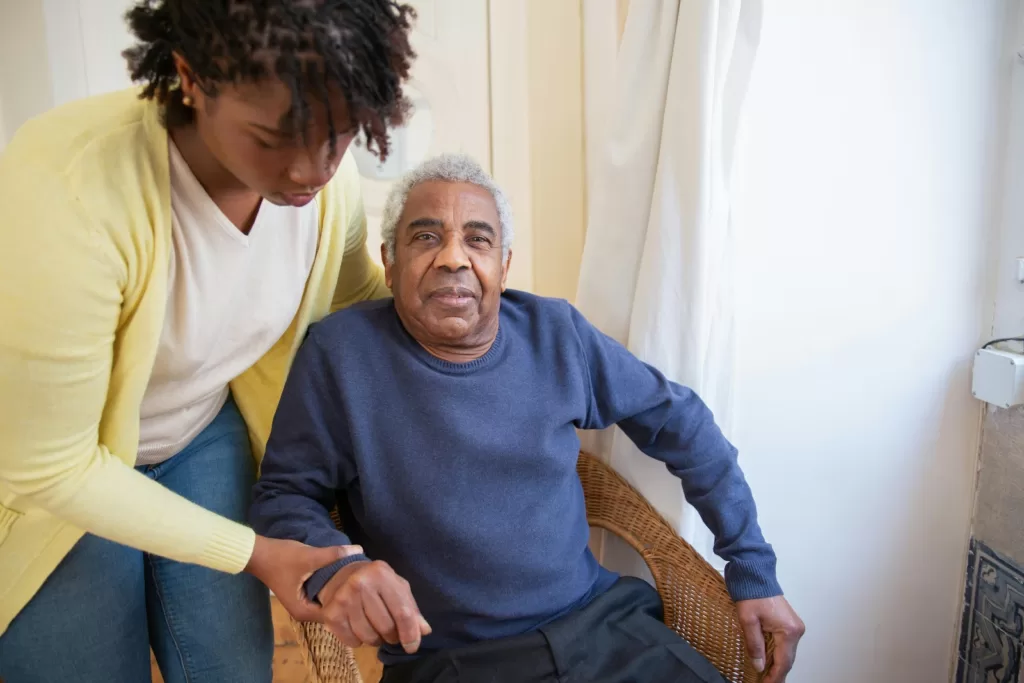Updated on August 24, 2025

SIL provides tailored assistance based on individual needs, helping people develop daily living skills while still receiving support. Over the years, innovations in SIL have transformed how these services are delivered, improving the quality of life for participants and enabling a more person-centred approach to care.
Here are some exciting innovations revolutionising SIL arrangements and their impact on people with disabilities.
Technology-Driven Support in SIL
Integrating technology into care models is one of the most significant innovations in Supported Independent Living.
Assistive technology makes it easier for people with disabilities to perform daily tasks and communicate more effectively with support workers.
- Smart Home Technology: Smart devices such as automated lighting, temperature control, and voice-activated assistants are making homes more accessible for people with disabilities. These technologies can be customised to respond to the specific needs of the individual, improving comfort and safety. For instance, voice-activated systems allow participants to easily control their home environment, reducing reliance on support staff for simple tasks like turning on lights or adjusting the thermostat.
>> Learn more about Accessible Accommodation
- Telehealth and Remote Support: With the advent of telehealth services, participants in SIL arrangements can access healthcare professionals without needing physical visits. This is especially important for people with mobility challenges or those living in rural areas. Additionally, remote monitoring systems allow support staff to check in on participants’ well-being via video calls or apps, reducing the need for constant in-home supervision.
- Mobile Apps for Independent Living: Mobile apps designed to assist with medication management, grocery shopping, budgeting, and even personal care routines are helping participants gain more independence. These apps can send reminders and track progress, making it easier for people to manage their daily tasks while staying connected with their support team.
- Wearable Assistive Technologies: Wearable devices like activity trackers and smartwatches can monitor vital signs, track medication schedules, and connect people with emergency responders. These advancements enhance safety, independence, and overall well-being.
- Assistive Communication Tools: For a person with speech or communication challenges, assistive technologies like communication apps and voice-activated software can empower them to express themselves and connect with others more effectively.
Person-Centered Care
Traditionally, SIL models often followed a standardised approach to support delivery. However, a growing emphasis on person-centred care recognises each participant’s unique needs and aspirations. This shift empowers people to have greater control over their lives, from choosing their level of support to customising their daily routines.
- Goal-Oriented Planning: Personalised SIL arrangements focus on empowering participants to achieve their life goals, whether that means improving their cooking skills, pursuing employment, or fostering social connections.
- Flexible Support Models: Some people may initially require 24/7 care but can gradually reduce the needed hours as they gain more independence. This dynamic approach ensures that participants can progress at their own pace without feeling restricted by rigid service structures.
- Shared Living and Individual Choice: Besides personalisation, SIL now offers more varied housing options, including shared living arrangements with other participants. However, personal choice is key, as participants can choose between living with others or opting for a more private arrangement.
Staff Training and Development
- Specialised Training Programs: Disability support workers now have access to more specialised training programs that focus on areas such as mental health support, complex care needs, and communication with people who have non-verbal autism. One innovative program is the “Picture Exchange Communication System (PECS),” a tool designed to help non-verbal individuals, including those with autism, communicate using pictures. Training programs on PECS teach support workers how to help participants build meaningful communication through this method, ensuring a more inclusive and supportive environment.
- Person-centred Care Approach: Training has also evolved to emphasise a person-centred care model, where support workers are trained to respect participants’ preferences, choices, and autonomy. One example is the “Person-Centred Thinking Training” by Helen Sanderson Associates. This program trains workers to adopt person-centred approaches by focusing on what is important to the participant, identifying ways to support their goals, and helping them achieve greater independence.
- Mentorship and Career Progression: Providers also recognise the importance of mentorship and career progression for support workers. The Support Worker Mentoring Program by National Disability Services (NDS) pairs experienced support workers with newer staff to guide them through challenges, share best practices, and ensure consistency in care delivery. By offering pathways for professional growth, providers can retain skilled staff and provide consistent, high-quality support for participants.
The Centre Disability Support Approach
At Centre Disability Support, we understand the importance of providing innovative and personalised Supported Independent Living arrangements (SILs). Our approach is built around the principles of choice, flexibility, and community integration, ensuring that participants have the freedom to live the lives they choose. Whether you need assistance developing a personalised support plan, want to explore shared living options, or want to integrate smart home technology into your SIL arrangement, we are here to help.
MORE FROM CENTRE DISABILITY SUPPORT
What Does A Support Coordinator Do?
How to Become a Disability Support Worker in Australia
Hospital to Home: How Disability Support Can Aid Transition and Recovery
What Is Person-Centered Support?
How to Become a Behaviour Support Practitioner
Life‑Changing Gadgets Every Person with Disability Should Know
The Importance of Support Coordination in Disability Services
https://centredisabilitysupport.com.au/blog/pace-for-ndis/https://centredisabilitysupport.com.au/blog/is-anxiety-a-disability-in-australia/
https://centredisabilitysupport.com.au/blog/is-seizure-disorder-a-disability-in-australia/
https://centredisabilitysupport.com.au/blog/things-not-to-say-to-your-aging-parents/
https://centredisabilitysupport.com.au/blog/is-crps-a-disability-in-australia/
https://centredisabilitysupport.com.au/blog/things-not-to-say-to-someone-with-a-mental-illness/
https://centredisabilitysupport.com.au/blog/how-to-support-someone-with-intellectual-disability/
https://centredisabilitysupport.com.au/blog/personal-support-for-people-with-disabilities/
https://centredisabilitysupport.com.au/blog/how-to-support-someone-with-schizophrenia/
https://centredisabilitysupport.com.au/blog/how-to-become-an-ndis-support-worker/
https://centredisabilitysupport.com.au/blog/does-veterans-administration-pay-for-assisted-living/
https://centredisabilitysupport.com.au/blog/how-to-support-someone-with-autism/
https://centredisabilitysupport.com.au/blog/is-bipolar-disorder-a-disability/
https://centredisabilitysupport.com.au/blog/how-to-support-someone-with-anxiety-and-depression/
https://centredisabilitysupport.com.au/blog/how-to-support-someone-with-borderline-personality-disorder/



